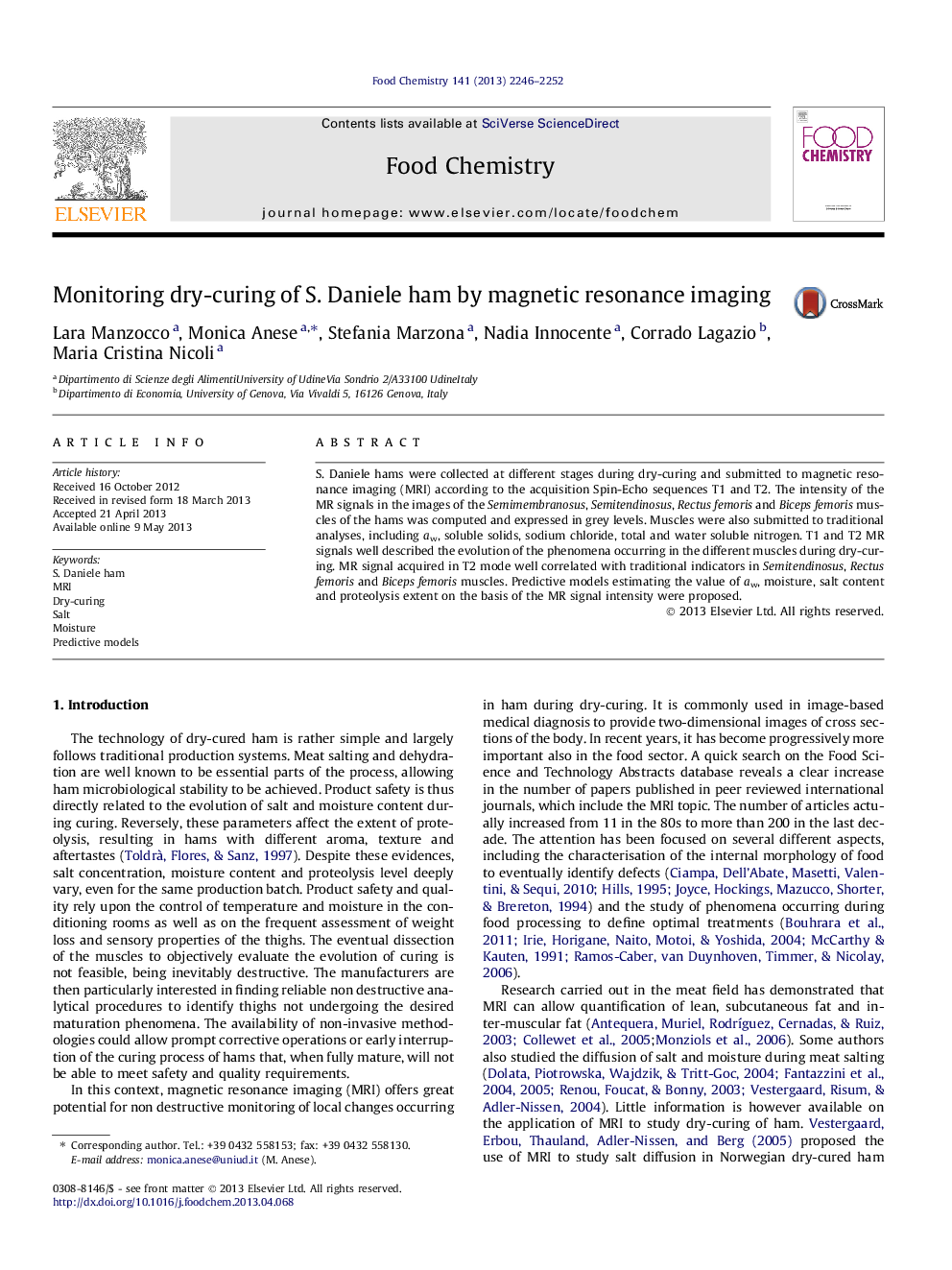| Article ID | Journal | Published Year | Pages | File Type |
|---|---|---|---|---|
| 10540226 | Food Chemistry | 2013 | 7 Pages |
Abstract
S. Daniele hams were collected at different stages during dry-curing and submitted to magnetic resonance imaging (MRI) according to the acquisition Spin-Echo sequences T1 and T2. The intensity of the MR signals in the images of the Semimembranosus, Semitendinosus, Rectus femoris and Biceps femoris muscles of the hams was computed and expressed in grey levels. Muscles were also submitted to traditional analyses, including aw, soluble solids, sodium chloride, total and water soluble nitrogen. T1 and T2 MR signals well described the evolution of the phenomena occurring in the different muscles during dry-curing. MR signal acquired in T2 mode well correlated with traditional indicators in Semitendinosus, Rectus femoris and Biceps femoris muscles. Predictive models estimating the value of aw, moisture, salt content and proteolysis extent on the basis of the MR signal intensity were proposed.
Related Topics
Physical Sciences and Engineering
Chemistry
Analytical Chemistry
Authors
Lara Manzocco, Monica Anese, Stefania Marzona, Nadia Innocente, Corrado Lagazio, Maria Cristina Nicoli,
